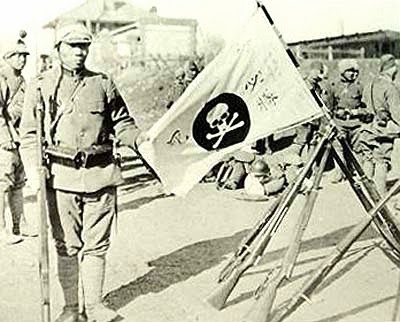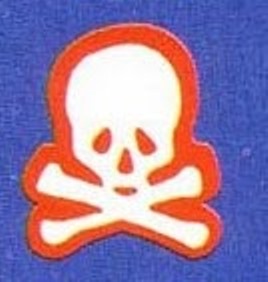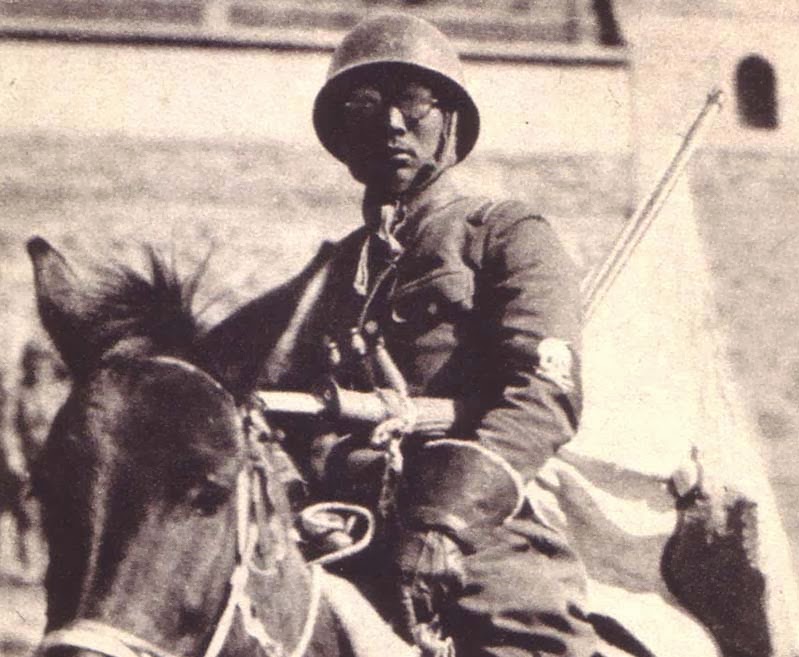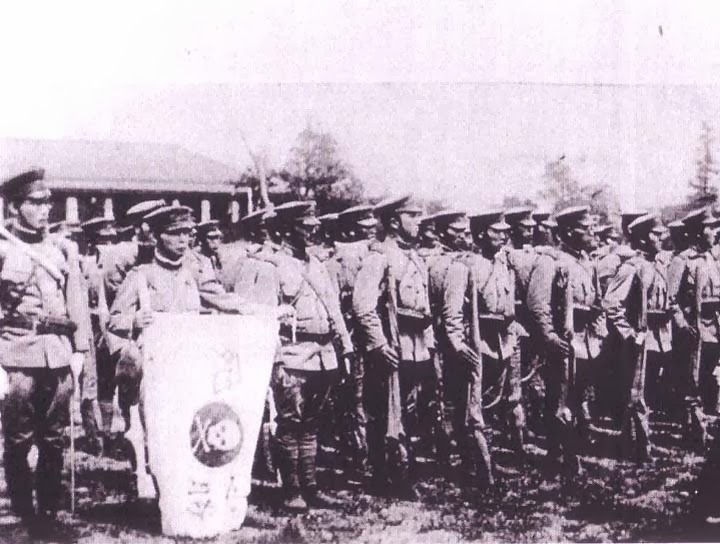Japan’s Skull Squadron (I)
- By Guest blogger
- 10 April, 2014
- 1 Comment

One of the oddest but also most feared Japanese units on the Asian mainland in the years prior to full-scale war with China was the so-called Skull Squadron. Read on in this article first carried on the Warfare Historian Blog:
The Second Sino-Japanese Conflict of 1931-1945 saw thousands of different regiments, divisions, units, and armies, nationalities fighting throughout what is today Mainland China, Myanmar (Burma), Mongolia, and Korea. Torn apart by revolution and civil war from 1911-1930, China faced a great challenge to its national sovereignty when the mighty Japanese military decided to press its economic and political claims in Manchuria and Northern China beginning in 1930-1931.
One of the most unique Imperial Japanese Army (IJA) units to fight in the earliest portion of the great Sino-Japanese conflict of 1931-1945 was the Skull Regiment, known alternatively as the Skull Squadron and as the “Manchurian Stormtroopers” for their unique regimental iconography and symbols. The Japanese Skull Regiment was seemingly inspired by the German Totenkopf, or Death’s Head regiments/brigades of the 18th-20th centuries. 

Formed originally during the reign of King Frederick the Great of Prussia (b.1712-1786), the Death’s Head hussars (light cavalry) became an elite branch of the Prussian and the German Empire’s cavalry arm until its collapse in November of 1918. In a bid to break the British and French lines in the West the Imperial German Army created heavily armed shock infantry regiments in 1917-1918, many using the Totenkopf as a badge and regimental icon. These solders came to be known colloquially as assault or stormtroopers. Later the Totenkopf gained international infamy as a military symbol used by Nazi Germany’s fanatical paramilitary forces, first the Sturmabteilung (SA) and later the Waffen-SS.
The Skull Regiment or Skull Squadron was led since its inception in the late 1920’s by First Lieutenant Ikagami. They were attached to the large and ever growing Kwantung Army (1906-1945), which had been in China guarding the Manchurian Railway line since 1906. This had been territory won by the Empire of Japan following their decisive defeat of the Russian Empire in Manchuria and Korea during the Russo-Japanese War of 1904-1905.
 Throughout the Skull Squadron’s service in Northern China, Inner Mongolia, and Manchuria 1930-1933, the Manchurian Stormtroopers engaged in numerous battles and skirmishes with the Chinese National Army and with the many localized bands of anti-Japanese volunteer forces which formed following the invasion of Manchuria by the Kwantung Army in September of 1931. Certainly these Manchurian “bandits”, as named so by the IJA, became the primary antagonists of the Skull Squadron and its commanding officer, the rather enigmatic and aloof Lt. Ikagami (pictured above). These so-called bandits consisted of both organized Manchurian militias and guerilla-peasant resistance groups, some of whom were armed with swords, spears, and bow and arrows.
Throughout the Skull Squadron’s service in Northern China, Inner Mongolia, and Manchuria 1930-1933, the Manchurian Stormtroopers engaged in numerous battles and skirmishes with the Chinese National Army and with the many localized bands of anti-Japanese volunteer forces which formed following the invasion of Manchuria by the Kwantung Army in September of 1931. Certainly these Manchurian “bandits”, as named so by the IJA, became the primary antagonists of the Skull Squadron and its commanding officer, the rather enigmatic and aloof Lt. Ikagami (pictured above). These so-called bandits consisted of both organized Manchurian militias and guerilla-peasant resistance groups, some of whom were armed with swords, spears, and bow and arrows.Ikagami and his unit participated in Operation Nekka, the squadron’s penultimate campaign honor in the Northern China-Manchurian campaign of 1931-1933. A series of battles erupted beginning in December 1932 and January of 1933 fought between Japan and its Manchukuo Imperial Army allies on one side and the Chinese Republican Army led by Marshall Zhang Xueliang and then General He Yingqin (b.1890-1987). The Kwantung’s Jehol operations force to which the Skull Squadron was attached was commanded by General Nobuyoshi Mutō (b.1868-1933).
The Jehol force was tasked with the taking of the Jehol (Rehe) province within Inner Mongolia closer to the northern reaches of the Great Wall of China. Their specific task was to defeat the Chinese Republican’s Northeastern Army in order to annex the territory to the Japanese puppet state of Manchukuo (Manchuria). The conflict in Jehol interceded the Battle for the (eastern) Great Wall of China and preceded the prolonged Inner-Mongolia campaign between Nationalist China and Japan from 1933-1936.
It was during the Battle of Rehe in February 1933 where the Manchurian Stormtroopers finally met a bloody end. Apparently suffering 100% casualties they were killed seemingly to the last man during the heavy fighting centered around Chifeng and Chengde (the capital of Jehol). Lt. Ikagami perished along with all of his men in the brutal fighting which saw the province’s capital eventually taken by Japanese armored and cavalry companies in early March. His death was mourned in Japan at the time and his funeral was a public affair. (To be continued.)




 Copyright © 2025
Copyright © 2025
I have a nambu pistol, with grips, that match the unit crest I wonder if it could have came from this unit?